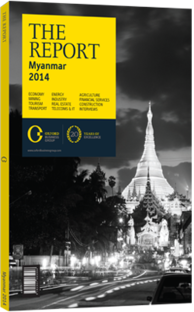A place to call home: Rapid urban migration is outpacing housing supply
As Myanmar moves to catch up with rapid industrialisation, the real estate sector has an important role to play in accommodating an expected wave of migration to urban centres. The pressure will be intense on Yangon, the business capital and primary port.
Urban Renewal
After being preoccupied for many years with the building of Naypyidaw, the new political capital, Myanmar’s government is shifting the focus of its urban development efforts back to Yangon. The central government and Yangon’s municipal government, known as the Yangon City Development Committee (YCDC), are pressing forward with several urban expansion projects. The YCDC is also working with the Japan International Cooperation Agency (JICA) to draw up an urban plan for how Yangon will expand to fit an estimated 10m people by 2040. That is about double its current population of around 5m. “Now that the country is open, everybody wants to come here to Yangon to look for jobs,” Tanaka Masahiko, JICA’s chief representative in Myanmar, told OBG. “Our future investment programmes in infrastructure such as public transit, electricity, water and garbage collection are aimed at preparing for Greater Yangon.” Situated upriver of the confluence of the Hlaing and Bago Rivers, Yangon’s expansion is largely a process of bridging those rivers and spreading out to both the west and the east. The biggest near-term project is the development of a new special economic zone in Thilawa, around 24 km south-east of Yangon across the Bago River. The core of the project is a huge, 2.4-sq-km industrial park on what is now rural land, adjacent to an already operating deep-sea port. JICA was involved in the planning stages of the project, which is being developed by a consortium of three major Japanese companies – Marubeni, Sumitomo and Mitsubishi. They together own a 49% stake in the development, while 51% is retained by the Myanmar government. Around the industrial park, the government anticipates that real estate investors will develop a completely new suburb. Land prices in the vicinity of the planned park have shot up. The Thilawa project’s master plan envisions 200,000 new jobs at the industrial park, which will be developed in phases focusing initially on light industry. “It’s not just an industrial zone, it’s a new city,” Masahiko said.
However, the project has been delayed by claims for compensation from local farmers. The farmers were given some compensation for the land when the project was initiated by the former military regime, but they did not relocate, as no work was done at the site for many years. Unable to afford comparable land at current prices, they have demanded more compensation. The government has called the farmers “squatters”, but is reluctantly negotiating with them. The project also depends on electricity and water supplies being brought to the site, which is the government’s responsibility. JICA is helping by funding power plant upgrades in Yangon that will also supply Thilawa.
Housing Options
Between Yangon and Thilawa, the older port town of Thanlyin is already being absorbed by Yangon’s sprawl. The main project there is Star City Thanlyin, a development of mid-rise condominiums with a planned 9000 apartments. The project is being developed by First Myanmar Investment, a unit of Serge Pun & Associates. The Dagon Seikkan township, on the north-eastern edge of Yangon, is the focus of low-cost housing development, which falls under the Ministry of Construction’s Department of Human Settlement and Housing Development. In January 2013 the department awarded permits to two major domestic developer-builders, Shwe Taung and IGE Company, to plan and construct two sites in Dagon Seikkan.
The two developments are planned to include a combined total of more than 17,000 apartments in 48 towers on 89 ha of land. Part of the YCDC’s Yangon 2040 vision is to develop five satellite business and commercial centres in what are now outer districts of the city. The first such project, called Min Dhama, has been allotted 20 ha of land in the Mayangon township, but the YCDC hopes to expand the project by 140 ha.
You have reached the limit of premium articles you can view for free.
Choose from the options below to purchase print or digital editions of our Reports. You can also purchase a website subscription giving you unlimited access to all of our Reports online for 12 months.
If you have already purchased this Report or have a website subscription, please login to continue.

